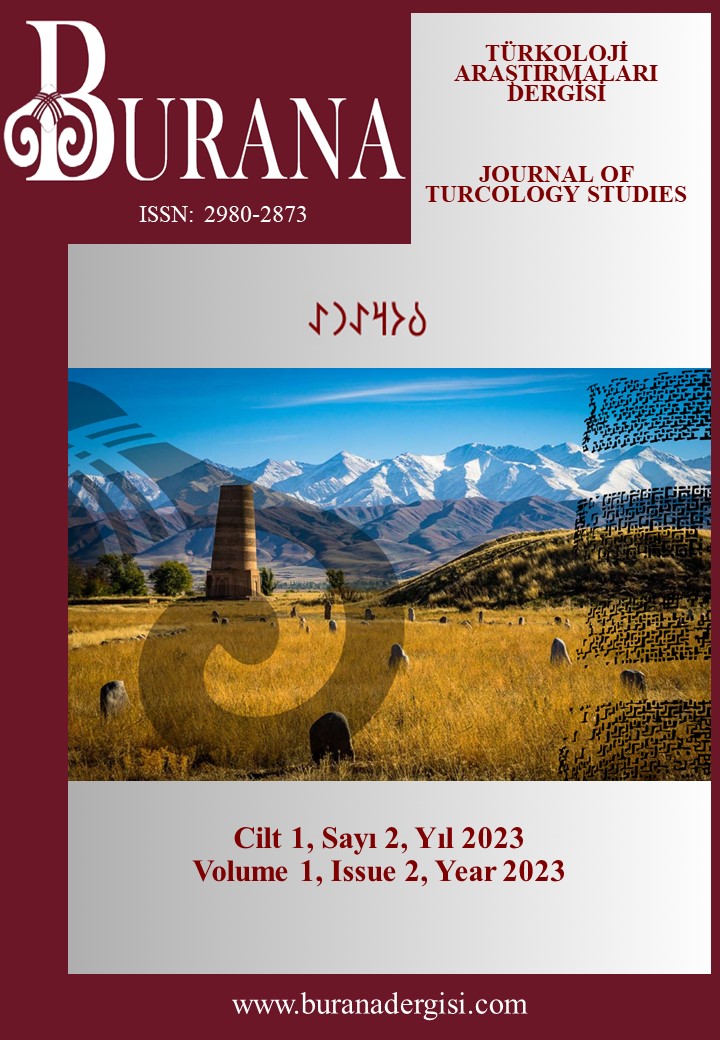A Comparative Study of the Work Songs Related to the Markazi Province of Iran with an Emphasis on the Theory of Cultural Ecology
DOI:
https://doi.org/10.5281/zenodo.10437787Ключевые слова:
Iran, Markazi Province, Cultural Ecology, Work Songs, RitualАннотация
The study of biological and cultural interaction guides social science researchers in explaining issues related to different areas of culture. This article seeks answers to the following questions: What are the cultural and economic areas affected by the relationship between humans and the environment, and what are the similarities and differences between them? What environmental factors change the belief ecology in these settlements? What social values, biological and cultural lifestyles do environmental situations give rise to? Around these questions, it is seen that different ethnic groups make biological and cultural synthesis or gain different or new features to their existing cultural elements. The data in this article was compiled from field research, as well as visual and verbal records previously made in the region, and written sources obtained through a literature review. The cities and villages of Komijan, Khondab, Meyghan, Anjedan, and some other areas were selected as samples. While determining the compilation regions, attention was paid to the fact that the regions had different environmental characteristics and the source people were from different ethnic groups. The research process shows that the unique environmental factors of each region create a series of changes that can be explained by drawing on the ideas of cultural ecologists. Environmental factors have significant effects on cultural accumulation. Environmental factors have significant effects on cultural background; beliefs, poetry, rituals, and economic exchange tools are closely linked to ecological culture. Therefore, it is concluded that the influence of the environment on the beliefs and ceremonies of the three regions studied is high and can be further investigated, whereas this effect is less on work songs.
Библиографические ссылки
Abubakri, Sh. (2020). Taraneha-ye kar dar mantaghe-ye Mokrian. Farhang-e Mardom-e Iran, (63), 131-154.
Aghakhani Bizhani, M. and Mohammadi Fesharki, M. (2020). Tahlil-e karkardha-ye ejtemai-ye ainha va jashnha dar Shahname bar asas-e nazariye-ye dorkim. Jastarha-ye Novin-e Adabi, (210), 25-46. DOI: 10.22067/JLS.2020.39339
Arianpour, A. H. (2001). Jame’eshenasi-ye honar. Nashr-e Gostardeh.
Bates, D. and Plag, F. (2003). Ensanshenas-ye farhangi (M. Salasi Translated.). Nashr-e Elmi.
Dehgan, E. (2016). Tarikh-e Arak. Nashr-e Zarrin va Simin.
Hanif, M. (2007). Avah-ye kar-e aghvam va hambastegi-ye melli. Farhang-e Mardom-e Iran, (11), 37-49.
Fakuhi, N. (2003). Tarikh-e andishe va nazariyeha-ye ensanshenasi. Nashr-e Ney.
Farrokhnia, R. (2005). Raveshha, ruykardha va dadeha dar mardomshenasi. Nashr-e Booali Sina.
Hoseini Abyaraki, S. A. and Amini, H. (2021). Avaha va sorudeha-ye kar dar farhang-e amme-ye Kermanshah. Faslname-ye Takhassosi-ye Adabiyat-e Farsi, (16), 54-57. DOI: doi.org/10.22054/qjik.2023.70671.1339
Mahjoub, M. (2003). Adabiyat-e amiyane-ye Iran, majmue maghalati darbare-ye afsaneha va adab va rosum-e mardom-e Iran 2. Nashr-e Cheshmeh.
Mirshokraei, M. (1999). Chay dar Iran, pajoohesh-e mardomshenakhti. Nashr-e Miras-e Farhangi-ye Iran.
Mirzai, S. (2003). Kavoshi darbare-ye vizhegiha-ye farhangi va eghtesadi-ye Kabutarkhaneha-ye Ostovaneishekl. Name-ye Ensanshenasi, (8), 115-139.
Mofakham, P. (1960). Farhang-e abadiha-ye Iran. Nashr-e Ferdosi.
Mohammadi, F. (1999). Barresi-ye mardomshenakhti-ye rusta-ye Javersian ba tekye bar janbeha-ye farhangi va ejtemai [Master’s thesis, University of Arak].
Mohamadpour, M. A. and Baba Safari, A. A. (2020). Barresi va tahlil-e darunmaye-ye kar dar taraneha-ye mahalli. Faslname-ye Takhassosi-ye Adabiyat-e Mardom-e Iran, (23), 23-39.
Moin, M. (1957). Miras-e Iran. Nashr-e Elmi va Farhangi.
Noban, M., Rashidi, N. and Yarmohammadi, H. (2003). Mardomnegari-ye Delijan. Nashr-e Miras-e Farhangi-ye Iran.
Orojlu, F. (2009). Jelveha-ye mashaghel dar tarikh va adabiyat-e Iran ba takid bar farhang-e ostan-e Markazi. Nashr-e Seda va Sima-ye Ostan-e Markazi.
Pajooheshfar, P. (2023). Bumshenasi-ye farhangi-ye ostan-e Markazi. Nashr-e Sokhan-e Daneshjoo.
Riviere, C. (2005). Ensanshenasi-ye siyasi (N. Fakuhi Translated.). Nashr-e Ney.
Sharon, J. (2003). Dah porsesh az didgah-e jame’eshenasi (M. Saboury Translated.). Nashr-e Ney.
White, L. (2000). Takamol-e farhang (F. Majidi Translated.). Nashr-e Dashtestan.
Загрузки
Опубликован
Как цитировать
Выпуск
Раздел
Лицензия
Copyright (c) 2023 БУРАНА - Журнал тюркологических исследований

Это произведение доступно по лицензии Creative Commons «Attribution» («Атрибуция») 4.0 Всемирная.


